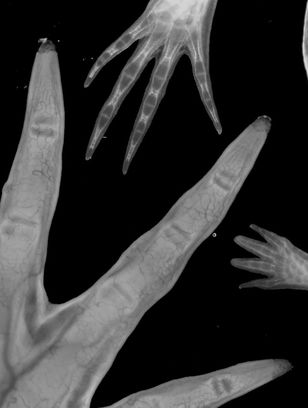The Currie Lab is now part of the Biology Department at Wake Forest University in Winston-Salem, North Carolina! In addition to being connected to the main Reynolda undergraduate campus, our lab will be located in downtown Winston-Salem at Wake Downtown; a new venture that brings together labs from Chemistry, Biology, and Engineering in a beautifully renovated former tobacco building. Wake Downtown is located in Winston-Salem's Innovation Quarter, adjacent to the Wake Forest School of Medicine and the Wake Forest Institute for Regenerative Medicine (WFIRM).
Please contact Dr. Currie for information about joining our research team! Come join us for great science, excellent cost of living and quality of life, and an unbeatable location that's a few hours drive to either pristine beaches or amazing mountain trails!
Please contact Dr. Currie for information about joining our research team! Come join us for great science, excellent cost of living and quality of life, and an unbeatable location that's a few hours drive to either pristine beaches or amazing mountain trails!
|
Mailing Address
Department of Biology Wake Downtown 455 Vine Street Winston Salem, NC 27101 Email
currie.regenerationlab [@] gmail.com Twitter
@_Josh_Currie |
Our new lab home, footage courtesy of Wake Downtown |
How do cells organize to repair and rebuild tissues and organs? |
|
After an injury, cells integrate signals from the wound environment to migrate, proliferate, and remodel the extracellular space to restore lost tissue. The sum total of these cellular "decisions" can have extreme differences. For mammals like us, the outcome is usually a fibrotic scar that fails to restore form or function. But in a few animals like the Mexican axolotl, Ambystoma mexicanum, injuries can heal perfectly and amputations of the tail (including spinal cord) or limb result in a complete regeneration of the structure. Cells couple injury to morphogenesis - converging at the amputation site into a mass of progenitors called the blastema.
Our goal is to understand how molecules, cells, and tissues are coordinated in space and time to build the blastema, a structure that is able to rebuild the limb. We are interested not only in how this process works, but how it is incredibly robust, working perfectly regardless of animal's size or where an injury occurs. At the same time, we want to compare the process in the axolotl with incomplete and fibrotic wound repair in mammals to identify key differences that can targeted for therapeutic improvements in wound healing and regeneration. |



